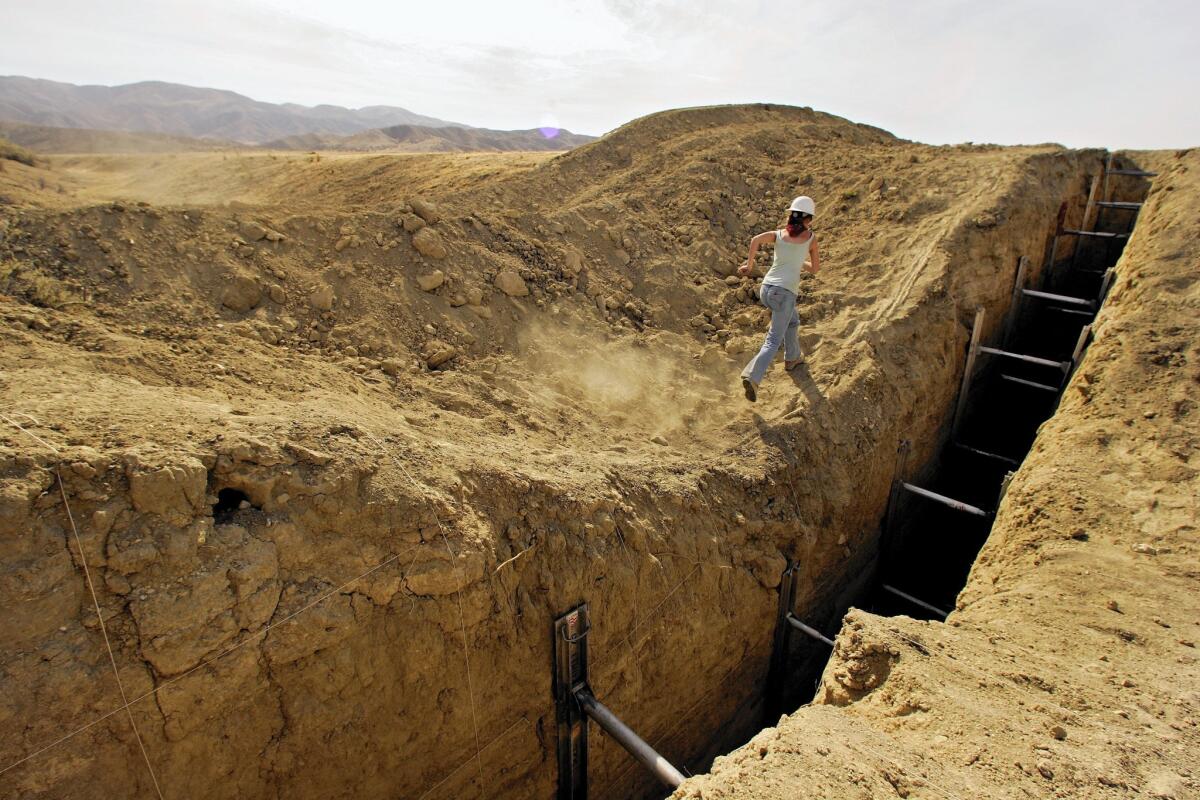U.S. quake damage is a risk that goes way beyond California

People living in California and the West Coast still face the highest earthquake risk. But a new study says we are not alone.
That report found that close to half of all Americans — nearly 150 million people — are threatened by shaking from earthquakes strong enough to cause damage.
That figure is a sharp jump from the figure in 1994, when the Federal Emergency Management Agency estimated that just 75 million Americans were at risk from earthquakes.
One reason for the sharp increase in exposure to quake damage is population increases in areas prone to earthquakes, especially California, said William Leith, a co-author and USGS senior science advisor for earthquake and geologic hazards.
Another factor is an understanding that earthquake damage is possible on the East Coast and in the South at a level of shaking that can cause damage, said Kishor Jaiswal, a research contractor for the U.S. Geological Survey. The new study was based on a significantly new methodology and better data and was completed by the USGS, the California Geological Survey and FEMA, among others.
Of the 150 million, more than 143 million were in the 48 contiguous states. Moderate to extensive damage is considered possible for 28 million Americans over their lifetime, the report said.
Authorities calculated that the average financial loss to earthquakes in the lower 48 states is roughly $4.5 billion a year, mainly in California, Oregon and Washington.
“Earthquakes remain an important threat to our economy,” Jaiswal said.
The numbers did not factor in the greater number of earthquakes that scientists say are occurring because of human activity.
Those earthquakes have increased in some parts of the eastern and central United States as wastewater is injected deep underground. Oklahoma has suffered the greatest number of man-made earthquakes in recent years, scientists say.
In Oklahoma, wastewater is being produced as a byproduct of hydraulic fracturing, or fracking, which involves shooting a high-pressure mix of water, sand and chemicals deep underground to extract oil and natural gas. Wastewater sent thousands of feet into the ground can set off earthquakes on faults that have not moved in a very long time.
In California, the greatest risk for a big earthquake is considered to be the San Andreas fault, which is the state’s largest and fastest-moving fault. The results of one study released in April suggested that the shaking of the “Big One,” the long-predicted major quake on the San Andreas fault, could trigger additional large temblors on nearby faults, intensifying the overall seismic impact.
And another study published in 2014 focused attention on the Ventura fault. New research shows that the fault is capable of producing a quake as large as magnitude 8 and could trigger severe tsunamis all the way to Santa Monica and farther south.
A magnitude 8 earthquake means very long stretches of fault are moving suddenly. To do that, a quake that starts on the Ventura fault could theoretically link up with other nearby faults, stretching all the way from the coastal area of Santa Barbara to inland San Bernardino County.
More to Read
Start your day right
Sign up for Essential California for news, features and recommendations from the L.A. Times and beyond in your inbox six days a week.
You may occasionally receive promotional content from the Los Angeles Times.






